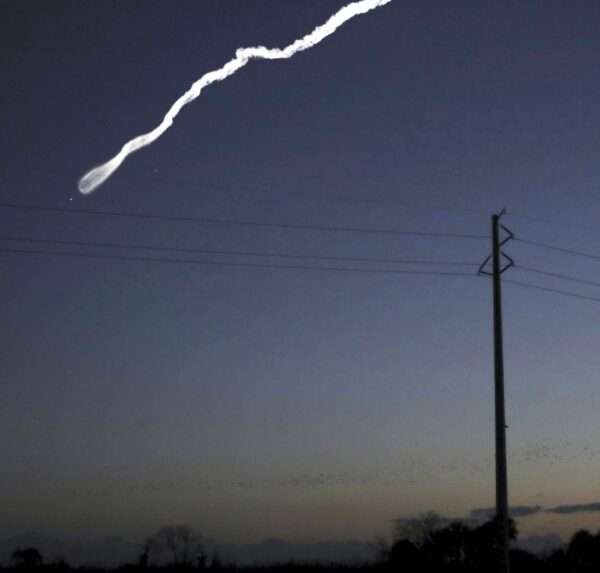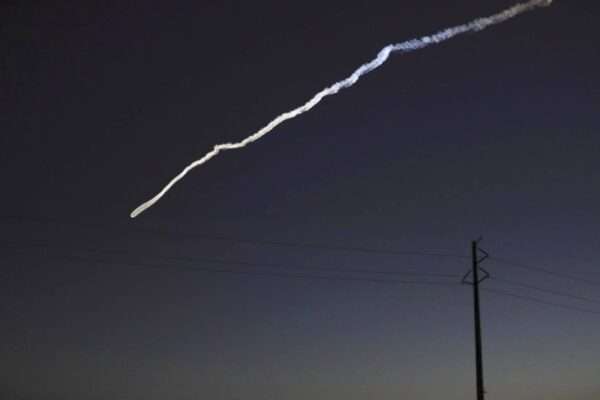In December 2019, things were looking up for Boeing when it launched its CST-100 Starliner from Cape Canaveral Air Force Station.
The uncrewed flight was supposed to prove out the space vehicle’s ability to dock with the International Space Station, and if things went well, Boeing would be moving on to the next step, a test flight with humans aboard, and then certification, and then get about the business of ferrying astronauts to and from the station on a normal basis.
While Starliner launched and landed safely, it did not ever make it to the space station, and a review of the problems with that flight have forced NASA and Boeing to take a hard look at software, hardware and workflow, and now they have to redo step 1.

A United Launch Alliance Atlas V rocket. (Joe Burbank/Orlando Sentinel/TNS)
Meanwhile, SpaceX was able to move on to its next steps with its own commercial crew vehicle Crew Dragon, and this week began the first of six contracted crew rotation flights to the ISS, shuttling four astronauts to the station for a six-month stay.
SpaceX is now essentially more than a year ahead of Boeing, which is working to finish addressing the 80 problems found by a NASA-Boeing Independent Review Team with its December Orbital Flight Test, which NASA designated a “high visibility close call.”
It’s all leading up to a reflight, known as Orbital Flight Test 2, which Boeing is doing at no cost to NASA. It was previously aiming to fly by December of this year, but at a press conference this week leading up to SpaceX’s successful launch, NASA Commercial Crew Program Manager Steve Stich said that flight won’t happen until the first quarter of next year.

A United Launch Alliance Atlas V rocket. (Joe Burbank/Orlando Sentinel/TNS)
“Right now we’ve been working hand-in-hand with Boeing,” Stich said. “They’ve done a tremendous amount of work on their vehicle. They continue to process that vehicle for OFT. The pacing item really is getting the software ready to go and then turning that into the products that come over to NASA. As they continue to make progress on the flight software, and the testing of that software, we’ll be able to refine that date a little bit better.”
Boeing confirmed the push of OFT-2 from December to early 2021, but could not set target dates for the crewed followup missions.
“Following a successful flight test, which Boeing is funding because of its commitment to safety and quality, the first Starliner mission transporting astronauts to the International Space Station will be scheduled,” the company said in a statement.
The most recent timeline from NASA released in September had Boeing flying OFT-2 next month, followed by the Crewed Flight Test with NASA astronauts Nicole Mann, Mike Fincke and Barry Wilmore flying no earlier than June and then the first operational flight to the ISS, Starliner-1, with astronauts Sunita Williams, Josh Cassada, Jeanette Epps plus a fourth passenger yet to be announced flying no earlier than December 2021.

A United Launch Alliance Atlas V rocket. (Joe Burbank/Orlando Sentinel/TNS)
Williams was on hand this week ahead of the SpaceX launch and lauded the efforts both NASA and Boeing were doing to ensure it joins the ISS party.
“It’s an amazing vehicle. It’s great. We’ve got two of them that we’re going to be flying and we’re making sure all the T’s are crossed, all the I’s are dotted,” Williams said.
She said the craft being prepped for OFT-2 is even more advanced than the one that made the attempt last December.
“The next spacecraft to go up, OFT-2, will be ready essentially for people to be on board. So it’s a little bit different from OFT-1 where we didn’t have all the systems in place, so it’s a little bit more diligent that we’re working on the spacecraft,” she said.
Despite the delay to 2021, Williams expected the rest of the timeline to potentially hold, saying the spacecraft for CFT is on track to be ready to fly in the spring, and that she and her crew could be flying on Starliner-1 in just over a year.
“Knock on wood, I’m hoping me and my crew will be ready to go by the end of next year,” she said. “It’s going to be an exciting year. We also have to worry about what ports are open on the space station. It’s getting a little crowded in space and that’s a really good thing. We’re just going to have to work into the schedule. Standby it’s going to be before you know it.”
___
(c) 2020 The Orlando Sentinel
Distributed by Tribune Content Agency, LLC.



